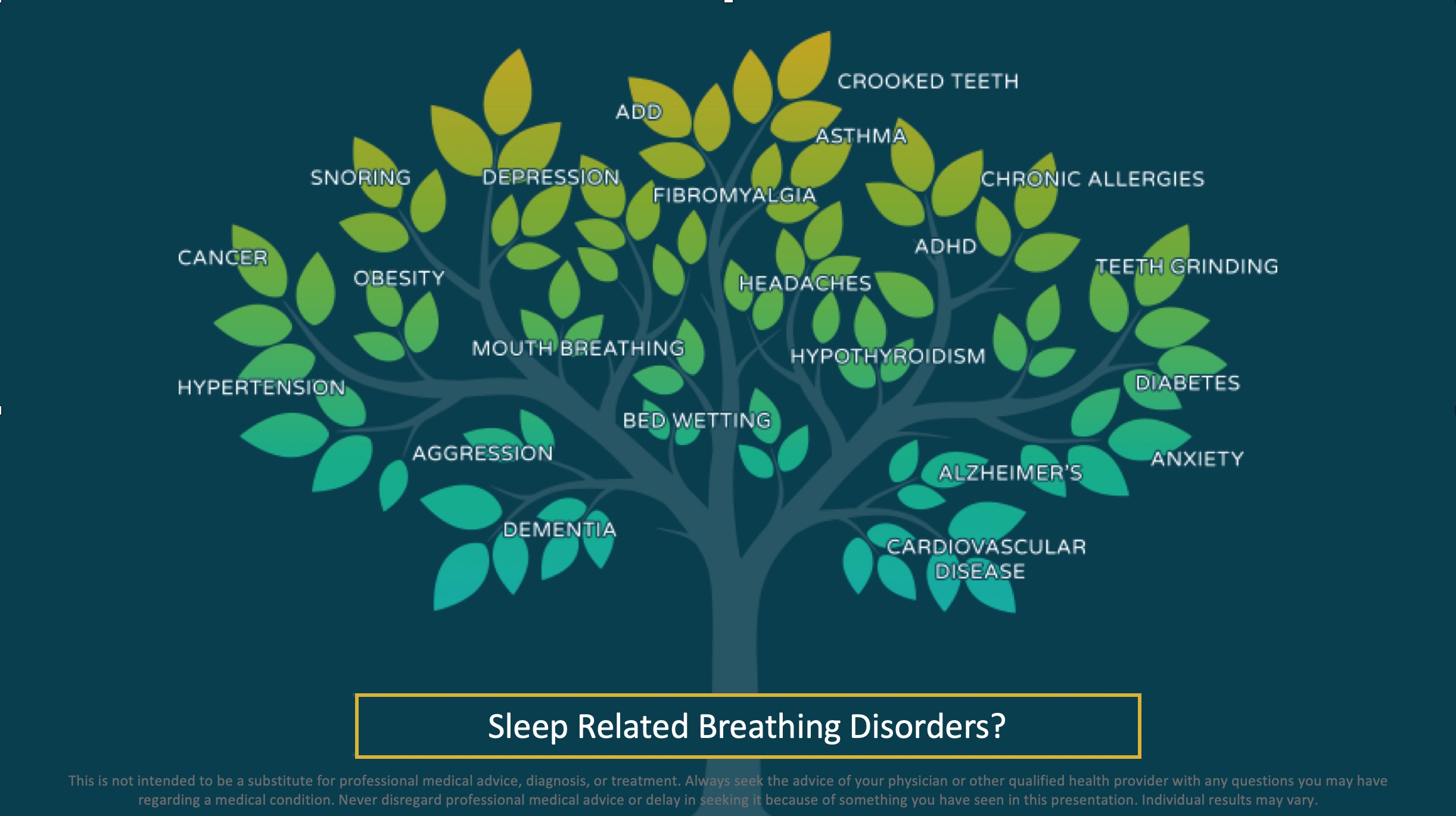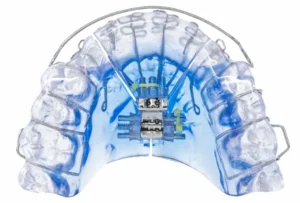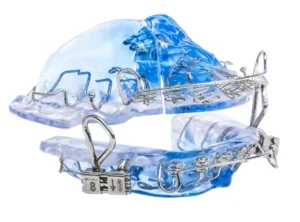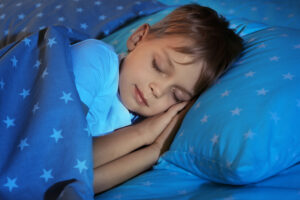

Understanding Sleep: A Guide from Smile Innovations Hawaii
“It is time for us to reclaim our right to a full night’s sleep. We can then be reunited with that most powerful elixir of wellness and vitality. Then we may remember what it feels like to be truly awake during the day, infused with the very deepest plenitude of being.” – Matthew Walker, Ph.D, from his book, “Why We Sleep”
Normal sleep involves air passing through the nose and sinus and going directly down to the lungs. This requires a wide open airway and nasal passages, in a mouth with upper and lower jaws and tongue in its proper position to allow this exchange promoting healthy sleep.
Sleep-disordered breathing refers to a range from snoring to severe obstructive sleep apnea (OSA). This is a serious sleep disorder characterized by intermittent cessation of breathing. These periods without breath degrade sleep quality and disrupt the body’s oxygen supply, potentially leading to significant health issues. Sleep apnea is generally presented in three key forms:
Obstructive Sleep Apnea (OSA): As the most prevalent category of sleep apnea, OSA results from excessive relaxation of the throat muscles during sleep. This relaxation obstructs the airway, impeding normal breathing.
Central Sleep Apnea: The central form of sleep apnea, which is less common, arises when the brain doesn’t instruct the respiratory muscles to breathe, causing short-term breathlessness.
Complex Sleep Apnea Syndrome: Also described as treatment-emergent central sleep apnea, this disorder manifests when an individual concurrently suffers from obstructive and central sleep apnea.
Although often recognized by robust, loud snoring, it’s important to note that not everyone who snores has sleep apnea. Risk factors for sleep apnea include obesity, excessive alcohol intake, drug use contributing to airway blockage. Genetics can also play a role – those with a family history of sleep apnea may be more susceptible to the condition. As declared by the Sleep Foundation, sleep apnea is a widespread sleep disorder affecting both genders and all age groups in the United States.
Dentists are in a great position to screen patients who present with dental clues of sleep-disordered breathing. Some of the oral signs include:
Ridges around the tongue
Red, inflammed gums
Dry mouth
Narrow palate
Enlarged tongue
Extra boney growths inside jaw and on under lips
Tongue-ties
Narrow airways
Patients are informed of these signs in their mouths and are given a home sleep test. This involves a simple ring worn on a finger for 3 nights after which a Sleep MD reviews the results and the dentist and patient can review the findings to see if oral appliance therapy is an option for the patient.

A more thorough Head and Neck Exam and Cone Beam CT also assists in evaluation and treatment planning.
A normal airway should be as large as a garden hose (airway colored in red):

A constricted or obstructed airway can be as small as a straw or coffee stirrer (airway colored in red):

Treatment planning objective will be to increase airway space for the patient. This can be done with various methods including maintenance with mandibular advancement appliances or orthopedic expansion of the jaws.


On Nov. 29, 2023, the FDA cleared this Vivos appliance as the FIRST ever oral appliance to treat Obstructive Sleep Apnea. We are very excited to be able to provide this treatment to those suffering from OSA especially those unable to tolerate a CPAP machine.
Call or schedule a consultation online for more information.
Pediatric Obstructive Sleep Apnea
 An estimated 1-4% of children suffer from Obstructive Sleep Apnea (OSA). Signs and symptoms include, but are not limited to:
An estimated 1-4% of children suffer from Obstructive Sleep Apnea (OSA). Signs and symptoms include, but are not limited to:
- Snoring
- Teeth grinding
- Restless sleep or unusual sleeping positions
- Bedwetting
- ADHD
- Large tonsils
- Anxiety
- Dry, chapped lips
- Frequent cavities
Many of these signs and symptoms are presumed to be normal for children, but they are not. Children who are unable to breathe properly will not thrive. If not addressed, these conditions can lead to improper jaw development, causing crooked teeth, jaw problems, bad breath, and cavities. It is crucial to get treatment as soon as symptoms appear, as early as 2 years old. Dr. Sebastian and her team are passionate about helping children breathe better to grow and thrive.
Perfect Mouth of a 5 yr. old child: Shows spaces between teeth. The tongue has developed the arch properly by nasal breathing which keeps the tongue against the roof of the mouth.
Note the spaces between the teeth. All upper teeth should fit on top of the lower teeth and cover only about 10-20% of the lower teeth when biting down.
Signs of Improper Growth of Jaws from Sleep Disordered Breathing:
Deep Bite: Upper teeth cover most or all of the lower teeth when biting down
Retrognathic Mandible: Lower jaw is forced backwards causing excessive space between front and lower front teeth
Anterior Open Bite: Potentially from thumb-sucking or other oral habits
Anterior Cross-Bite: Upper front teeth fit behind lower teeth
Posterior Cross-Bite: Upper back teeth do not fit over lower back teeth as they should
Treatment for children may consist of one or more of the following options:
Dental Appliances: Depending on the child’s age, removable or fixed appliances can be worn to help them breathe better while sleeping, allowing the tongue to rest on their palate and develop their dental arches properly.


Vivos guides are used to treat underlying causes of sleep disordered breathing and obstructed airways. They are worn while sleeping. These guides train the tongue to go to its proper position which is against the hard palate to help it grow optimally and make room for the permanent teeth. By training the tongue and lips to their proper positions, it also strengthens these muscles to help children breathe through their noses and not with their mouths.
Myofunctional Therapy: This is physical therapy for the mouth, tongue, and facial muscles, which helps strengthen and restore normal function. A myofunctional therapist teaches children and adults the correct muscle use for improvements in talking, eating, and breathing through many different exercises.

Tongue and/or Lip Tie Release: This laser surgical procedure releases the muscle for proper range of motion in tongue or lip function. This procedure is done with myofunctional therapy training before and after.
Tonsillectomy and/or Adenoidectomy Reduction: In children, obstructions may arise from enlarged tonsils and adenoids. The latest study from Dr. Audrey Yoon at Stanford in 2022 showed that over 90% of their patients who had rapid palatal expansion experienced significant reduction in adenoid and tonsil volume. Surgery may not be necessary for many patients today. SleepMed.2022Apr: 92:96-102
Adult Snoring and Sleep Apnea Treatment
 Obstructive Sleep Apnea (OSA) affects 39 million US adults, but only 6 million are diagnosed. Breathing disruptions may occur when a patient’s upper airway is blocked during sleep, leading to snoring or gasping for air. Complete pauses in breathing are termed apneas, while shallow breaths are hypopneas. Many health conditions are linked to sleep apnea, including Alzheimer’s Disease, stroke, diabetes, asthma, and COPD. Screening and diagnosis are critical in reducing the number of OSA patients and helping them live healthier lives while lowering their risks for other diseases linked to OSA.
Obstructive Sleep Apnea (OSA) affects 39 million US adults, but only 6 million are diagnosed. Breathing disruptions may occur when a patient’s upper airway is blocked during sleep, leading to snoring or gasping for air. Complete pauses in breathing are termed apneas, while shallow breaths are hypopneas. Many health conditions are linked to sleep apnea, including Alzheimer’s Disease, stroke, diabetes, asthma, and COPD. Screening and diagnosis are critical in reducing the number of OSA patients and helping them live healthier lives while lowering their risks for other diseases linked to OSA.
Common signs and symptoms of OSA include, but are not limited to:
- Excessive daytime sleepiness
- Snoring or gasping for breath at night
- Episodes of no breathing or difficulty breathing causing sounds
- Mouth breathing while asleep or during the day
- Severe teeth grinding or unexplained fractured back teeth
- Lack of concentration or memory loss
Home sleep testing is now available through our office using the FDA-cleared SleepImage Ring. It is easy to use, comfortable to wear on a finger, and suitable for children over age 2 and adults. The extensive data from the Ring is reviewed by a board-certified Sleep Physician, interpreted, and manually scored for the diagnosis of OSA and/or CSA (Central Sleep Apnea). We then collaborate with your physician to create a proper treatment plan.
Treatment Options:
Dental Oral Appliances: There are many custom-made oral appliances designed to posture the lower jaw forward and downward, opening up the airway at night. Some appliances simply manage the condition and need to be worn forever. Vivos appliances expand the jawbone to increase space for the tongue and improve the airway obstruction after which treatment is completed. Vivos appliances which we provide are the only FDA-approved appliance for treatment of severe OSA. v


Myofunctional Therapy: Similar to the children’s therapy, it strengthens and restores normal function in the mouth, tongue, and facial muscles. A myofunctional therapist trains patients to use these muscles properly for improvements in talking, eating, and breathing.
Clear Aligner Therapy: Involves wearing clear plastic aligners to move teeth into better positions, creating more room for the tongue and thus increasing airway space.

CPAP: This is the gold standard for OSA treatment and is prescribed by a physician. For those who cannot tolerate a CPAP machine, oral appliance therapy has been an effective alternative.

There are other surgical options for OSA treatment that may be considered if all other treatments are unsuccessful.
If you’re grappling with sleep apnea or suspect you might be, reach out to our compassionate team at Smile Innovations Hawaii. We’re committed to providing personalized care and professional advice tailored to your specific needs. Contact us via phone or email or fill out our online appointment request form. We look forward to helping you reclaim your restful nights and healthful days.
